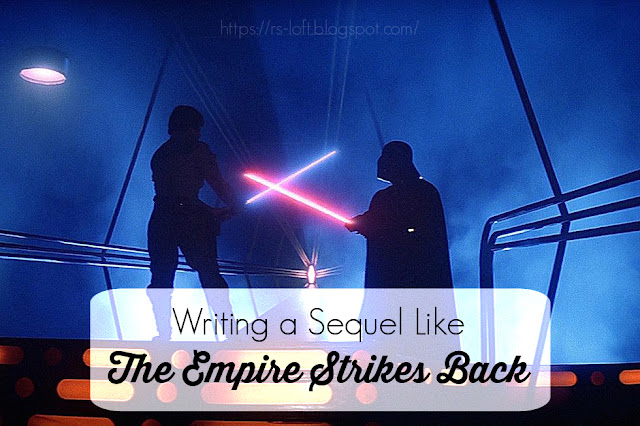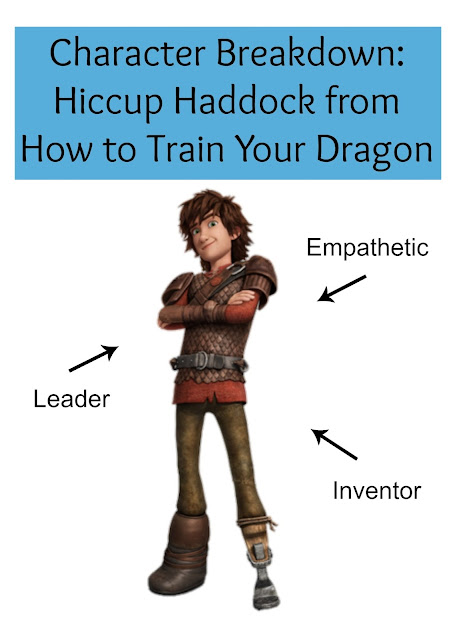Writing a Sequel Like The Empire Strikes Back

How did they do it? And more importantly, how can you too write a sequel that beats the first movie and leaves readers hungry for more? That's what we're going to break down today.
In case you're one of the few people on Earth who haven't seen this movie, spoilers ahead!


Change the Stakes
In A New Hope (from here on referred to as movie one), Luke is focused on saving one person, Princess Leia. Even taking out the Death Star at the end of the movie technically has that effect, as losing the rebel base would mean losing her too.
In Empire, the stakes have shifted. The Empire is pursuing them, set on destruction. They also split up our main characters, giving Han and Leia one set of stakes (escaping the Empire) and Luke another one (saving his friends). Each puts the characters in equal danger, as Leia and Han get handed over to Darth Vader and Luke is drawn into a trap.
You can't have the same stakes in book two as book one. If they defeated a minor bad guy in the first book, that minor baddie can't come back for book two, or at least not without good reason. If they face the same threat, we become bored. If they defeated so-and-so last time, surly they'll do it again. Instead, pit your characters against new threats that will test them to their limits.

Emotional Bonds
The first movie focused more on making a space western with wise-cracking characters, action sequences, and a solid plot. Empire takes what A New Hope set up and expands on all of it, including the character relationships. The mild interest Han showed in the beautiful princess is expanded into a full romance. Luke's Jedi abilities are expanded and trained.
By this point, not only have the characters formed bonds with one another that shows on screen, we've formed bonds with them. If you didn't already know Han and Luke, the opening sequence with the wampa wouldn't be as tense, because you wouldn't know or care about these characters. But we do, so we sit on the edge of our seats as Luke stumbles through the snow and Han searches for him as the temperature drops. (This whole opening really goes to show the growth all of the characters have gone through between movies.)
If you're going to write a sequel, you need to build on what you started in the first book, especially the relationships. Book twos are often a little slower than book one or three, so take the time to really develop your character's relationships with one another. Allow them to grow and flourish and take on new directions that you only hinted at before.

Keep Losing
The characters in this movie just can't win. First, their base they've been hiding at the beginning of the movie is found and destroyed. Then Han and Leia get separated from the rest of the rebel fleet due to a hyper-drive malfunction. Luke heads to Degoba only to crash his ship into the swamp and discover the Jedi he was sent to find is half crazy (love you anyway, Yoda).
It only gets worse from there. Han and Leia escape the Empire, only to be found and captured again to be used as a trap for Luke, who takes the bait. Even though most of them escape, they still lose their friend to Boba Fett. This sets things up perfectly for them to rise and be victorious in the third movie. Which they will be, just not yet.
Your characters can't win all the time. They need to taste defeat to gain the motivation to win the final victory. So let them suffer. Not as much as they will in book three, but don't be afraid to heap some failures on them. Show us why they need to win in the end, and how they can't afford to lose any more.

Introduce Novelties
Empire doesn't just continue with what we saw in the first movie, it adds a bunch of new characters, information, and settings. We get three new planets, including one with floating cities. We learn more about Jedi and Luke's background. They introduce us to characters like Lando and Boba Fett. All of these things are new and interesting and help keep us engaged.
But it still doesn't answer all our questions. Who is Boba Fett and why is he so awesome? Who is the other Jedi? What will happen to Han? How long did Luke actually train on Degoba, because there's no way he could have gotten so good in so short a time (sorry, they don't tell you that one). These are all used to keep us coming back to movie three.
Adding new and novel things to your second book helps keeps readers interested. We don't want to see the character in the same place, dealing with the same conflict, with nothing new for another whole book. This is your middle, and needs to keep our interest all the way through book three. Adding new characters and settings can also help to change the stakes or bring new depth to the story.

Go Bigger
In the first movie, we only saw Darth Vader from afar. This time, Luke is taking him head-on. Before, we barely know anything about the Force or how to use a ligthsaber. Now we know a lot more and we get some epic ligthsaber duels. We get AT-AT walkers, more personal villains, and a bigger conflict.
Not only that, our characters are pushed harder than they have been before. The changing circumstances force them to adapt and change. Luke is no longer the whiny farmboy he once was, but a developing warrior determined to save his friends. Han is no longer so self-centered, Leia so prickly. C-3Po is still annoying, though.
You have to kick things up a notch each book in your series. You can't go all the way to ten in book two, but you can go to about seven and show readers how bad that is. They can only image what book three will be like. You want to remain within reason, though, or else their suspension of disbelief is lost.

The Big Twist
I saved this one for last because that's what they do in the movie. This whole time we've only seen Darth Vader as this terrifying monster, with abilities beyond our heroes. Then, in the iconic, and often misquoted line, he changes the whole conflict. "No, I am your father." He's no longer just a villain, but someone who was once a man. Who had a wife and children before he became warped into the Sith lord he is today.
This completely changes the face of the conflict. It's one thing to fight a faceless villain, but your own father? No one saw it coming, from Luke to the audience. That's why it's one of the biggest plot twists in cinematic history. From now on, the conflict will most revolve around Luke and Vader trying to influence the other to their side. But for now, we're left with our heads reeling.
They say your middle book should contain a plot twist that changes the hero's perception of the conflict. I know this is hard, as I've struggle with it myself. But this is your chance to really blow your reader's socks off. Again, be careful though, so you don't shatter their beliefs too hard.

Why do you think Empire Strikes Back is so good? What's your favorite part of the movie? Tell me in the comments.
Suggested Posts:



It's a great movie! Great tips!
ReplyDeleteThanks!
DeleteHaha, you are so right! It is universally known that this is one of the best sequel ever! Love all these tips. Changing the stakes is the most important part of a sequel for me, but I hadn't thought of the others.
ReplyDeleteAwesome! I love Empire so much.
Delete